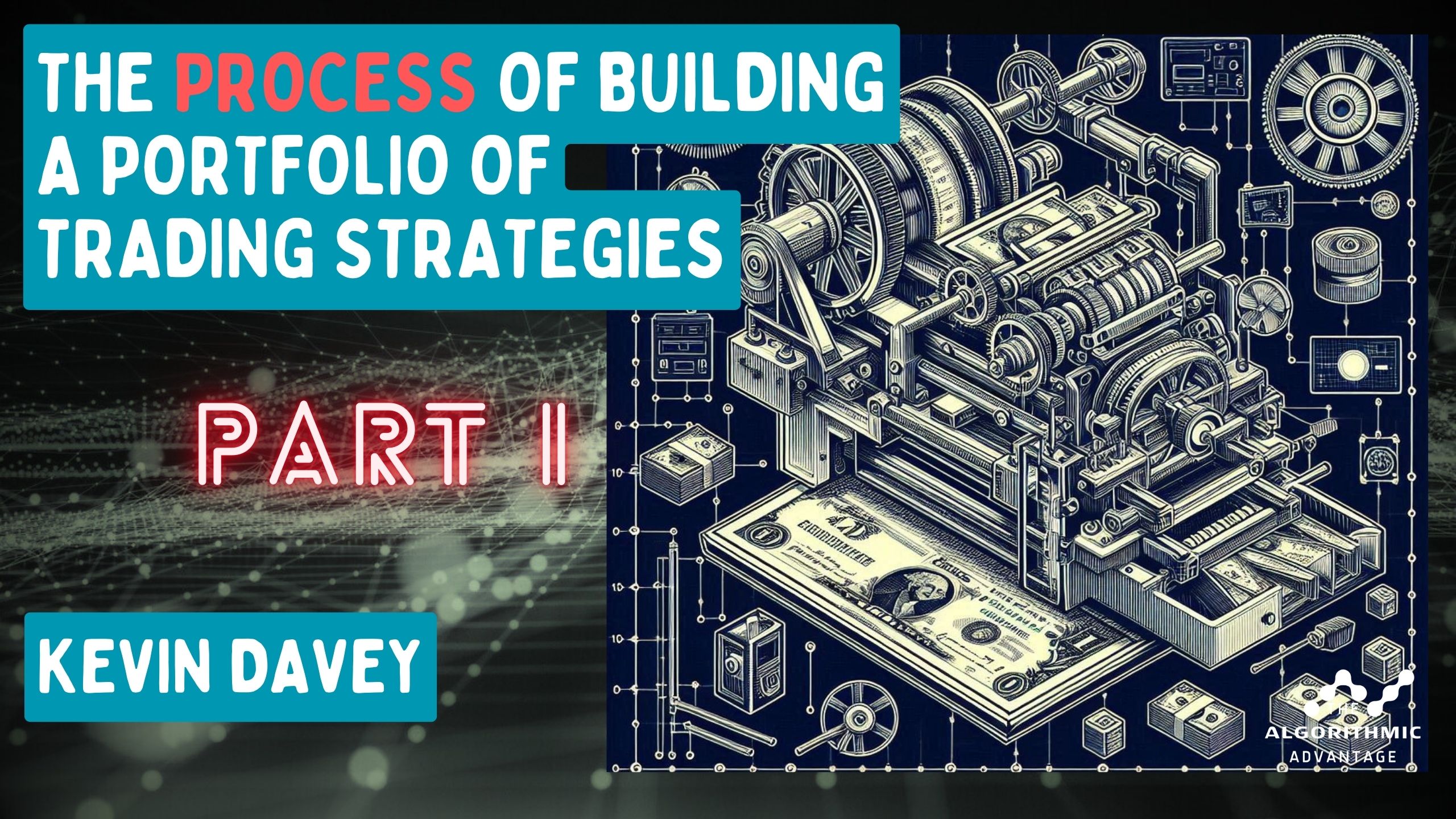036 - Kevin Davey Part I - It's All About Process in Algo Trading

The Imperative of a Robust Trading Strategy Process
I trust everyone is having a relaxing Passover week and is ready to devour some trading wisdom from Kevin Davey, an algorithmic trader with over 30 years of experience and a background in aerospace engineering and quality assurance, who exemplifies the importance of a disciplined process in trading. His expertise lies in trading futures on US exchanges like the CME and ICE, spanning all possible sectors (Kevin names seven). Kevin employs a variety of strategies, from intraday trades using minute bars (even unconventional bars e.g., 32-minute bars) to longer-term positions held for months using daily bars. His approach prioritizes diversification across sectors and time frames to manage risk effectively, as well as monthly strategy rotation to deploy the hottest performers for the current market environment. For advanced quantitative traders, Kevin’s methodology offers a blueprint for generating, testing, and implementing trading strategies with precision and resilience.
Defining Objectives and Generating Ideas
A robust trading process begins with clear objectives. Kevin emphasizes defining goals upfront—such as a target return-to-drawdown ratio—to guide strategy development and prevent overfitting. Without this, traders risk endlessly tweaking strategies to perfection, a trap that often leads to failure in live markets.
Idea generation is the next step, where Kevin casts a wide net. He explores technical indicators, candlestick patterns, statistical methods, and cautious data mining. While he tests a variety of concepts, he leans toward simpler, causal (logical) strategies, noting they often outperform complex ones in live trading. For instance, a basic breakout strategy might suffice, though it comes with larger drawdowns—a trade-off traders must accept. Kevin also favours longer-term strategies, as they offer a better signal-to-noise ratio, reducing the impact of market noise and costs like slippage. Initial testing is usually (but not always) conducted on small data subsets to refine ideas without compromising the full dataset’s integrity for later validation.
Validating Strategies with Walk-Forward Optimization
Walk-forward optimization is a pivotal step in Kevin’s validation process. This technique splits historical data into in-sample periods (for optimization) and out-of-sample periods (for testing), simulating real-time performance. The process “walks forward” through the data, ensuring each out-of-sample test reflects unseen conditions. Note we deep-dived walk forward in the prior episodes with Bob Pardo, the investor of the process. Crucially, Kevin insists on a one-shot test: once defined, the strategy is evaluated without adjustments. Tweaking based on results risks implicit overfitting, undermining the out-of-sample integrity. Success hinges on meeting predefined criteria, like the return-to-drawdown ratio, ensuring the strategy’s robustness for future performance.
Assessing Risk and Performance with Monte Carlo Simulations
Post-walk-forward testing, Kevin uses Monte Carlo simulations to assess a strategy’s risk and performance. By resampling trade results, this method generates a distribution of potential outcomes, revealing the range of returns and drawdowns. It’s a critical tool for aligning strategies with a trader’s risk tolerance and setting realistic expectations. For example, a strategy might show promise in backtests but reveal vulnerability to extreme losses under simulation. While not a crystal ball, Monte Carlo provides a probabilistic lens, enhancing decision-making for advanced traders navigating uncertain markets.
Incubating Strategies: The Live Market Test
The incubation period is Kevin’s ultimate robustness check. After passing walk-forward and Monte Carlo stages, strategies are monitored in a live market environment—without real money—for 6 to 12 months. This step exposes them to real-time dynamics like slippage, commissions, and data anomalies not fully captured in backtests. Many strategies falter here, revealing flaws that save traders from losses. Kevin cites a survey of his students, where 85-90% credit incubation with avoiding bad strategies or confirming good ones. This patience, though challenging, is a differentiator in a field where most rush to deploy untested algorithms.
Managing a Diversified Portfolio and Continuous Improvement
Once validated, strategies join Kevin’s portfolio library, where diversification is key. He balances risk across sectors using margin as a proxy for sector risk-exposure, ensuring no single market dominates. For instance, a loss in crude oil might be offset by gains in bonds or metals, smoothing the equity curve. However, trading futures—a zero-sum game—demands psychological resilience. Kevin acknowledges that drawdowns are inevitable, requiring traders to endure pain without abandoning their process—a subtle edge in itself.
Continuous improvement is equally vital. Markets evolve, and past successes don’t guarantee future results. Kevin constantly develops new strategies, adapting to shifts like the unprecedented cocoa rally that broke some of his older algorithms. This relentless refinement, rooted in his quality assurance background, keeps his portfolio competitive.
Conclusions
A critical aspect to Kevin's entire process is 'subbing in and out' on a monthly basis: that is, removing poor performing strategies and substituting in better performing ones from his library of over 200 strategies, where generally only 20 or so will be deployed at a time. These strategies will be spread across around 40-50 futures symbols, and he always attempts to keep an equal risk exposure to the seven distinct sectors. Certain rules (such as this sector diversification or forcing short equities models) are followed based on risk management principles, despite the back-test results. This is wise way of avoiding over-fitting and ensuring his risk of ruin is zero. In summary, the entirety of Kevin's process maximizes productivity and returns, for the right amount of risk (both market and operational risks), while keeping the strategies in tune with the current market conditions.
In the cutthroat world of algorithmic futures trading, a structured process is non-negotiable. Kevin Davey’s approach—defining objectives, rigorous validation via walk-forward and Monte Carlo methods, live incubation, and proactive portfolio management—offers advanced quantitative traders a framework to thrive. By blending engineering precision with market adaptability, his methodology underscores that success lies not just in the strategies themselves, but in the disciplined process behind them.
Trade well and prosper!
Get in Touch with Kevin:
